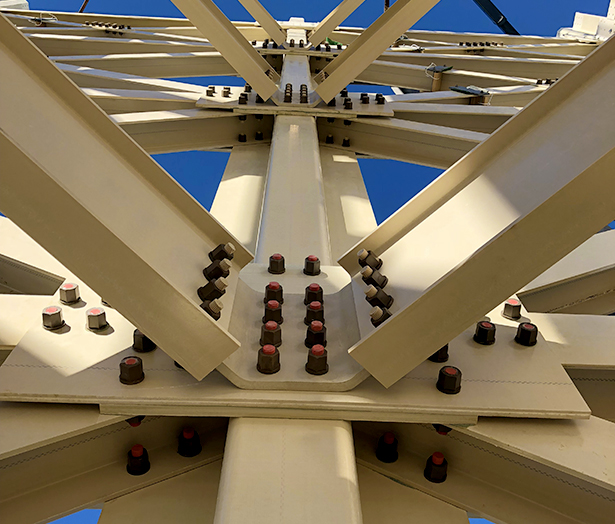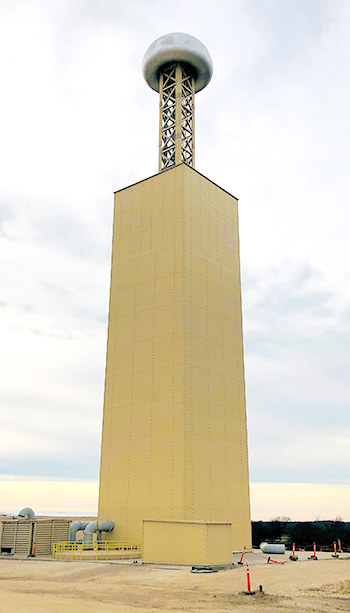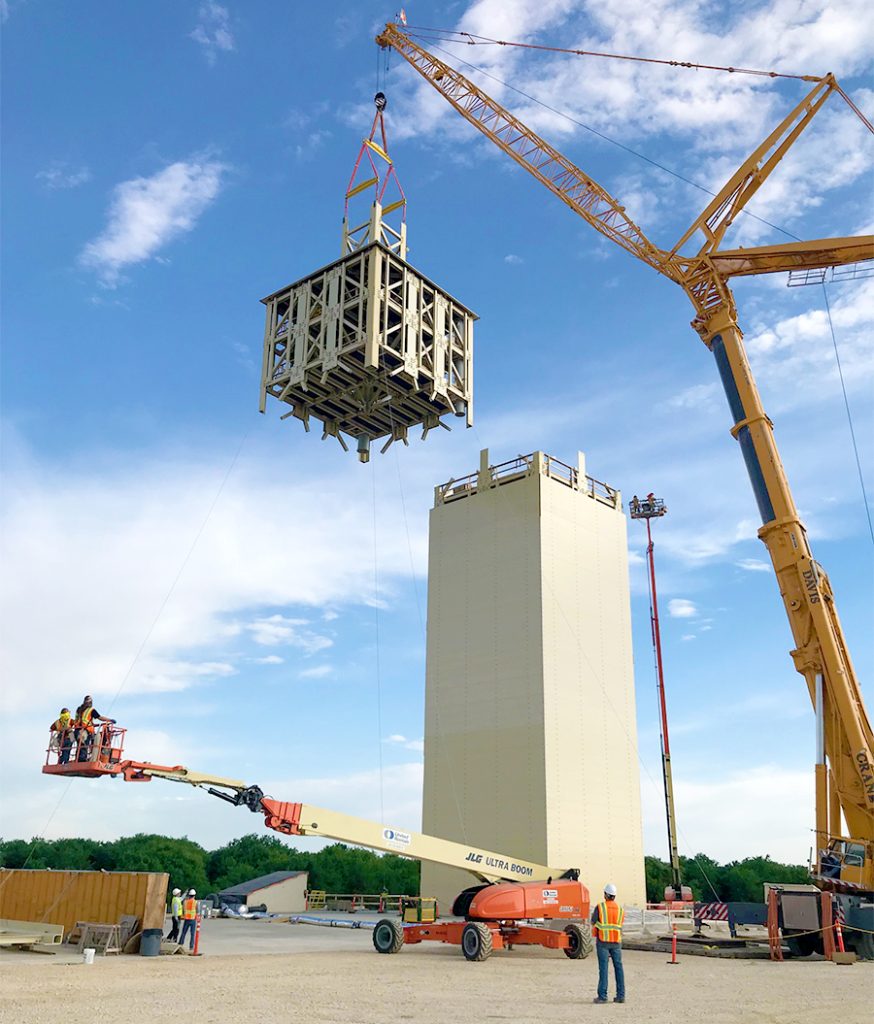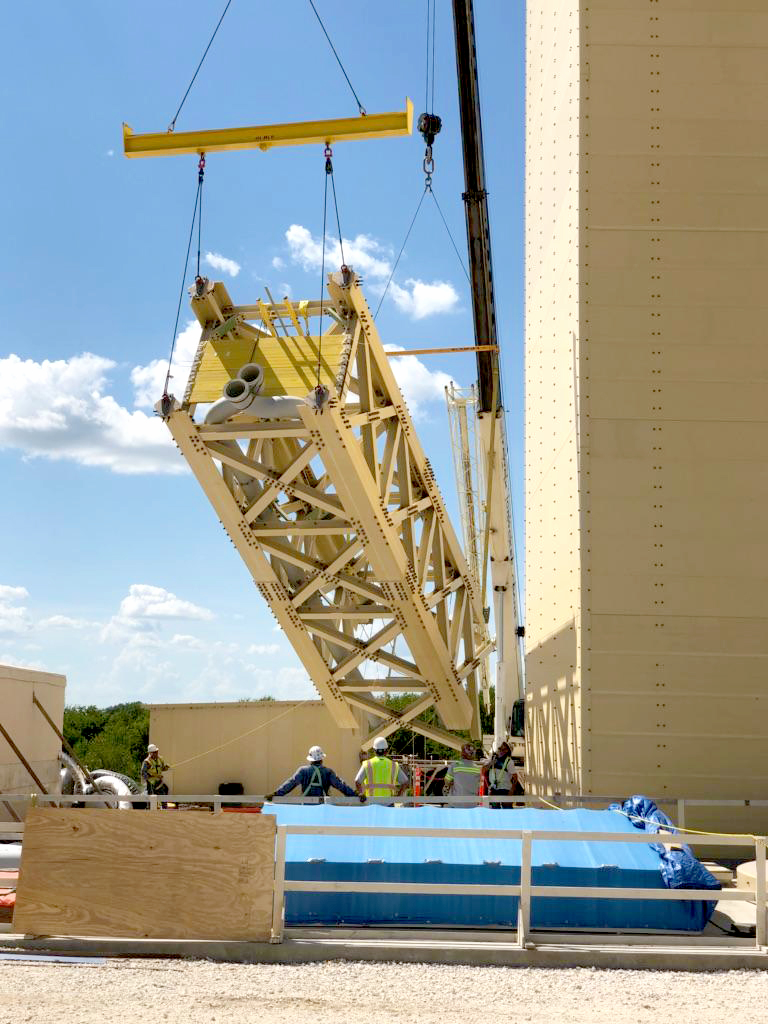Towering Above Design


Measuring almost 200 feet (61 meters) in height, the world’s largest freestanding FRP tower was part of a 40-year R&D utility initiative in transmitting wireless energy. The structure meets ASCE 7-10 design specifications and is capable of withstanding wind speeds of up to 115 mph (185 kph).
With the exception of the clevis plates and a few stainless-steel braces, the tower was fabricated and constructed entirely with pultruded fiberglass products made by Strongwell. The majority of structural components were custom designed shapes with high strength reinforcements. Bespoke tooling was designed to pultrude each of the shapes using a vinyl ester resin. In areas where pultrusion would not suffice, hand-layup processes were used.
The complex, lattice-style vertical structure measures almost 20 stories. On the account of strength, the 1/2" (12.7 mm) thick plates possess a lengthwise pin bearing strength of 30,000 psi (206,843 kPa). The 3/4" (19 mm) and thicker plates possesses a lengthwise and crosswise pin bearing strength of 20,000 psi (137,895 kPa). Each of the column section’s planar shear strength was measured at 7,250 psi (49,987 kPa).
| TECHNICAL DATA |
|---|
| Product: Freestanding FRP Utility Tower |
| Process: Pultrusion, Fabrication |
Materials & Sizes:
|
| For & User: Viziv Technologies |
The interior supports are comprised of wide flange beams, intermediate columns, and corner columns. Individual corner columns in this structure are attached with about 40 threaded FRP hex nuts. Intermediate columns contain about 70.
Over 28,000 FRP threaded hex nuts, 13,400 linear feet (4,084 linear meters) of threaded rods, and almost 30,000 linear feet (9,144 linear meters) of DURASHIELD® was used for exterior cladding. The weight of those three items totaled almost 260,000 lbs. (117,934 kg) of composites.
The use of RF-transparent FRP minimized signal losses. Being outdoors, ultraviolet degradation and corrosion resistance were also factors in material choice selection. In fact, no other structural material was capable of meeting the structural loads and transparency requirements.
The end user reported that they were pleased with the project timeline and material performance. The structure was erected onsite in phases due to internal access and safety structures (handrail, ladders, cages, and landings) being simultaneously installed. Weight reduction played a major role as each fabricated section had to be hoisted, stacked, and fastened to one another.



